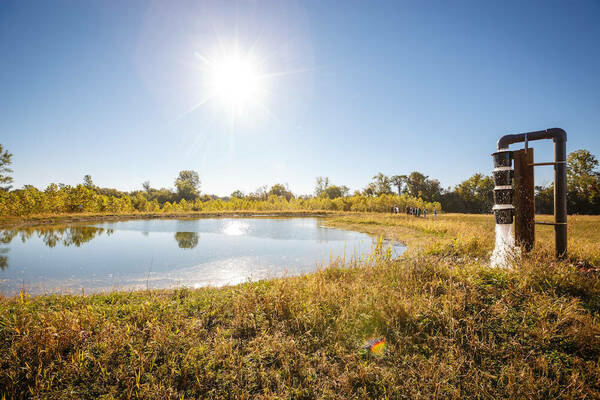
One of the biggest challenges of environmental-related research is that it is often conducted in the lab while the results are intended to be applied in the natural world. The University of Notre Dame’s Linked Experimental Ecosystem Facility (ND-LEEF) provides a space for research teams to work at an intermediate scale, offering an opportunity to take accurate measurements in a field-like environment that mimics the complexities of the real world.
ND-LEEF, which is part of the Notre Dame Environmental Change Initiative (ND-ECI), is located in St. Patrick’s County Park in South Bend, Indiana and led by Diogo Bolster, Professor of Civil & Environmental Engineering & Earth Sciences and Frank M. Freimann Collegiate Chair in Hydrology. The facility’s natural setting allows researchers to maintain control while testing hypotheses through experimental manipulation.
“ND-LEEF offers a state-of-the-art set-up to study the transport of nanoparticles, environmental DNA, contaminants, and more in flowing water through our interconnected streams, ponds, and wetlands,” said Bolster, ND-ECI associate director. “Researchers from Notre Dame and all over the country have been using our globally-unique facility and my goal is to continue to grow that user group over the coming year.”
In addition to its role as a research facility, ND-LEEF also serves as a venue for community outreach programs targeted at adults and families.
To learn more about ND-LEEF, please watch this new video, which is part of the Notre Dame Research Explores series and visit environmentalchange.nd.edu/resources/nd-leef.
Originally published by at research.nd.edu on January 15, 2020.